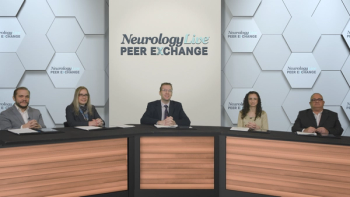
Genetic Testing for Huntington Disease
The profound consequences of the results guide decisions about testing. Who should be tested? And, just as important, who should not?
Dr Bishayis Professor of Anatomy and Physiology in the Department of Biology at North Park University, Chicago, IL, and Professor of Advanced Pharmacology in the School of Nursing at North Park University.
Huntington disease is an autosomal dominant neurological disorder characterized by neuron degeneration that results in progressive motor abnormality such as chorea, a decline in intellectual functions, and psychiatric conditions such as depression. Symptoms typically appear in the third to fifth decades.1 Thus, genetic determination becomes a preoccupation for many because of the consequences of knowing whether they will develop the disease later in life.
Genetic determinants
Previously, it was difficult to determine the pedigree of Huntington disease because of the late onset of symptoms and the need for a large number of individuals for the investigation. The diagnosis depended on enzymatic markers, which could exclude Huntington disease in 20% of the population.
In 1983,
Another breakthrough occurred 10 years later. The previous technique required a sample of many family members, but in 1993 a specific mutation was discovered as a “trinucleotide repeat expansion” on the short arm of chromosome 4.2 Then a gene was targeted by cloned exons in that area. Known as IT15, the gene was composed of a trinucleotide repeat of sequence CAG: “A (CAG) repeat longer than the normal range was observed on HD chromosomes from all 75 disease families examined, comprising a variety of ethnic backgrounds and 4~16.3 haplotypes.”3
The trinucleotide repeat with at least 17 alleles in the normal population can range from 11 to 35 CAG sequence copies, but in patients with Huntington disease, the number of repeats increases to a range of 42 to 66 copies. The number shows a correlation with the age of onset: the younger the age, the larger the number of repeats. It was also found that earlier onset (before age 21) stems mainly from paternal gene transmission rather than maternal. Individuals with a larger number of normal repeats have a delayed onset of the disease; such a modifier of the gene may help in the future to counteract the mutation and possibly prevent the disease. The penetrance is full, which means that children of Huntington disease gene carriers have a 50% possibility of inheriting the gene, and those who do will eventually develop the disease.4
Pathophysiology
The Huntington disease mutation is related to an unstable gene, in a similar pattern to fragile X syndrome, spino-bulbar muscular atrophy, and myotonic dystrophy. The tandem nucleotide repeat expansion is believed to code for RNA of a protein called huntingtin, resulting in neuronal cell death. The progressive neurodegeneration in Huntington disease mainly involves the basal ganglia and cerebral cortex.
Symptoms
Age of onset is usually in the 30s or 40s, but it can occur in those as young as 2 to 3 years and as old as 80 years.4 The clinical picture includes motor disturbances in the form of choreiform movements, cognitive impairment, mood disorders, and behavioral changes that are chronic and progressive.
Genetic testing
Initially, testing was done mainly by detecting the linkage. After the gene was discovered in 1993, testing could directly identify the gene itself.
The test can be done by sending blood samples to a laboratory, whether to detect the gene and confirm the diagnosis, for presymptomatic testing of carriers and high-risk candidates, or for prenatal testing. Over the years, the test has proved its effectivity and was incorporated as a National Health Service test in the UK 10 years after its establishment.2
The cost of the laboratory DNA test ranges from $200 to $300.2 In addition, there is the expense of “confirming the diagnosis,” which typically occurs in persons with a suspected diagnosis, in the absence of family history as in cases of adoption or a deceased parent, and in the event of a de novo mutation.
Candidates often choose to pay for the test out of pocket for fear of disclosure to third-party payers such as health insurance companies and for fear of exposure of their private information to their employers and potential discrimination.5 Sometimes they give false information about their identity or ask for the test anonymously.4
Consequences of the test results
The results of genetic testing for Huntington disease must be taken into consideration. The consequences of the test outcome should guide recommendations about who should be tested.
Psychological outcomes
Researchers have assessed the risk of depression in patients found to have the HD gene. In 1986, when the test involved the genetic linkage, not the direct gene,
A
A
Overall, predictive testing has not resulted in suicide attempts. Revised guidelines recommend at least two or three pre-test sessions that involve a genetic counseling session, a psychological assessment, and a neurological examination, although these recommendations should be considered on a case-by-case basis.8 In general, patients cope well with test results.
Effects on the family
Some
Pre-test marital assessment is recommended, and the reversal of roles in marital relationships must be addressed. The extended family should also be involved. Maximizing connection and autonomy throughout the phases of the disease should be stressed.
Prenatal testing
Prenatal testing is less frequently requested, primarily because many high-risk candidates have undergone the test before pregnancy and decided not to become pregnant. Presymptomatic testing during pregnancy has a profound effect on the mother who finds out that she is a carrier. If prenatal testing reveals that the fetus carries the HD gene, the couple can undergo severe distress whether they decide to terminate the pregnancy or not.
Preimplantation genetic diagnosis (PGD) is available for couples who want to avoid termination of pregnancy: “Most often PGD tests are performed on single cells biopsied at the eight-cell embryo (day 3 of development). The genetic analysis for monogenic disorders such as HD takes advantage of PCR to amplify the DNA and for detection of the repeat sizes for each chromosome.”4 The drawbacks of PGD are “allele dropout,” the high cost of the procedure, and the low success rate, yet it can still be considered.
Children of positive carriers
Testing minors for Huntington disease is contraindicated. If a parent is a carrier or already has the disease, it is advisable to allow their minor children to grow up and decide for themselves whether they want to be tested. Because of the possibility of a treatment for Huntington disease in the future, there is no need to burden children with the knowledge of being a gene carrier, especially since the disease will probably not develop until they are in their late 30s or 40s.4
In general, people at risk have been familiar with the symptoms since childhood. They experience stressors that may involve their relationship with the affected parent, who may be preoccupied with her or his condition and experiencing depression or agitation as a symptom of the disease. Moreover, the choreic movements may frighten children. Family dynamics are disturbed and must be addressed in counseling, in addition to providing support and up-to-date genetic information about the disease.
Who should undergo testing for Huntington disease?
Generally, testing should be performed in the following settings4:
• Individuals at risk, who should be tested as adults not as minors
• Prenatal testing, which is best performed before high-risk candidates plan to have a child
• Preimplantation genetic diagnosis, which is an option when in vitro fertilization is used
• Confirmation of the diagnosis
Genetic, psychological, and family counseling, as well as neurological assessment must be employed. Support should be given to the patient and the carrier.
Disclosures:
Dr Bishay reports no conflicts of interest concerning the subject matter of this article.
References:
1. Gusella JF, Wexler NS, Conneally PM, et al.
2. Harper PS, Lim C, Craufurd D.
3. The Huntington’s Disease Collaborative Research Group.
4. Myers RH.
5. Brandt J, Quaid KA, Folstein SE, et al.
6. Codori AM, Slavney PR, Young C, et al.
7. Meiser B, Dunn S.
8. Tibben A.
Newsletter
Keep your finger on the pulse of neurology—subscribe to NeurologyLive for expert interviews, new data, and breakthrough treatment updates.


























